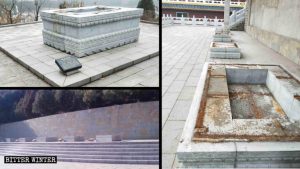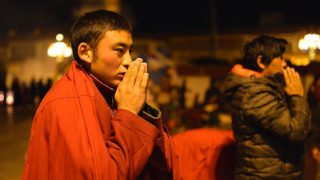Aiming to stop the spread of Tibetan Buddhism in mainland China, CCP is tightening its grip over any religious activities or expression of traditional culture.
Yang Xiangwen
Over the past decade, while the number of practicing Buddhists among ethnic Tibetans in China has remained more or less constant, the popularity of Tibetan Buddhism has increasingly grown among the urban Han middle class, gaining several millions of new believers. Annoyed by the growth, authorities have been carrying out oppressive policies by harassing monks, controlling the appointment of religious leaders, and destroying temples and statues. The clampdown has intensified during the months approaching the 60th anniversary of the 1959 Battle of Lhasa that brutally ended Tibet’s autonomy and forced the Dalai Lama to exile.
Tibetan Buddhism investigated in Hebei, further crackdowns planned
According to a recently obtained document, issued by a local government in northern China’s Hebei Province in March, officials are required to thoroughly investigate the spread of Tibetan Buddhism, including monks’ lectures, initiation ceremonies for novice monks, and other religious activities. The document also demands to ascertain the organizational structure of local Tibetan Buddhists, their activity patterns, and methods of information dissemination, including the venues where people study Tibetan Buddhism as well data about related websites and WeChat groups. The information concerning the Tibetan Buddhist architecture, statues, ornaments, and so on, should also be collected and analyzed. These tasks were initiated by Hebei Province’s United Front Work Department.


Some have expressed concern that given the Chinese Communist Party’s usual practices, it is likely that authorities across Hebei Province will take further measures to comprehensively crack down on Tibetan Buddhists after preliminary investigative work is completed.
Monks expelled from Wanfo Garden
Multiple instances of crackdowns against Tibetan Buddhism occurred throughout Hebei Province in the past year. In a meeting convened by the Bureau of Religious Affairs in Wu’an city, the prevention of the propagation of Tibetan Buddhist culture was emphasized, requiring to restrict and supervise all their activities.

The Wanfo Garden (literally Ten-thousand Buddha Garden, 萬佛園) scenic area, located in Malanyu town under the jurisdiction of Zunhua city, is an operational cemetery that was built with the approval of the Ministry of Civil Affairs and the State Administration of Cultural Heritage. Tibetan Buddhist monks (lamas) were previously allowed to chant, worship Buddha inside the garden and perform traditional ceremonies for the dead.
Nearby residents could hear the sound of lamas’ bells and drums every day until October last year. Since then, not a single red-Tibetan-robe-wearing lama has been seen in Wanfo Garden. According to the scenic area’s workers, the local government is afraid that lamas will promote Tibetan Buddhism and cause instability, so they ordered them to be expelled, and the statues of the Eighteen Arhats have been removed from the garden. Even the Tibetan-language sutras that the lamas recited, as well as Buddhist-scripture-chanting machines and lama robes, were destroyed and prohibited from appearing in the garden. Reportedly, all lamas have been forced to return to Tibet.

Prayer flags destroyed, temple faces closure
To promote the teachings of Tibetan Buddhism, the person in charge of Jiulong Temple (located in a remote mountainous area under the jurisdiction of Jiujiang city in northern China’s Shanxi Province) placed Buddhist prayer flags around the temple and throughout the mountains, attracting many visitors who came to worship Buddha and chant.
As the flags fluttered in the wind, they draw the attention of the local government, resulting in a crackdown: Last July, the local Bureau of Ethnic and Religious Affairs ordered the closure of Jiulong Temple and required to destroy all decorations related to Tibetan Buddhism.
According to one Buddhist, at the time, personnel from the Bureau of Ethnic and Religious Affairs threatened the person in charge, saying, “If you don’t destroy the prayer flags, we will tell the police to arrest and imprison you!” To protect the flags, the in-charge vowed to self-immolate if pressured more. Since in the past ten years, over 150 Tibetans have already set themselves on fire in protest against the suppression of Tibet’s Buddhist culture in China, the officials backed off that time, fearing more casualties. But they returned to the temple frequently to harass worshipers, eventually destroying the flags.

“The prayer flags were brought in from Tibet, and are regarded as treasures by those who believe in Buddhism,” explained the Buddhist.
Believers are worried that the temple closure is imminent.
source:BITTER WINTER



